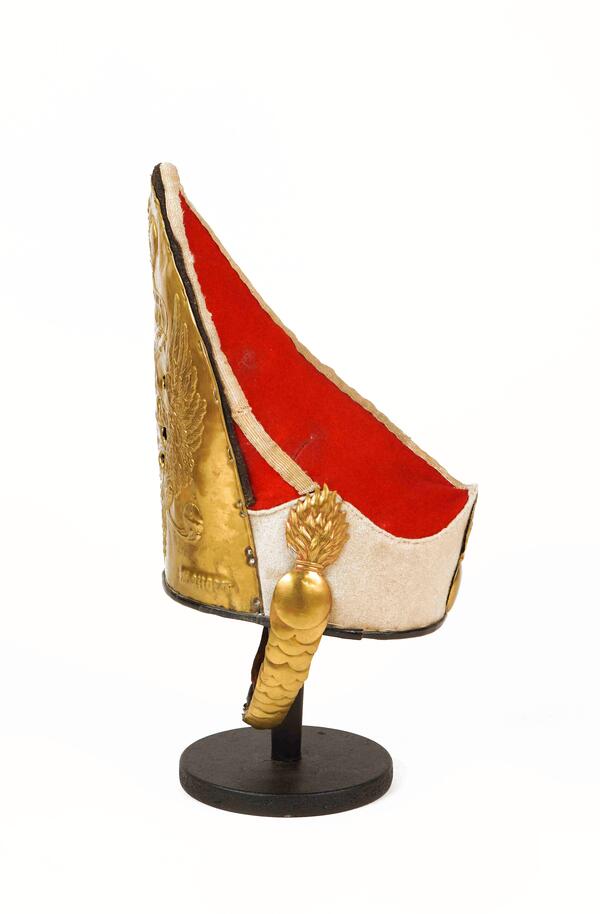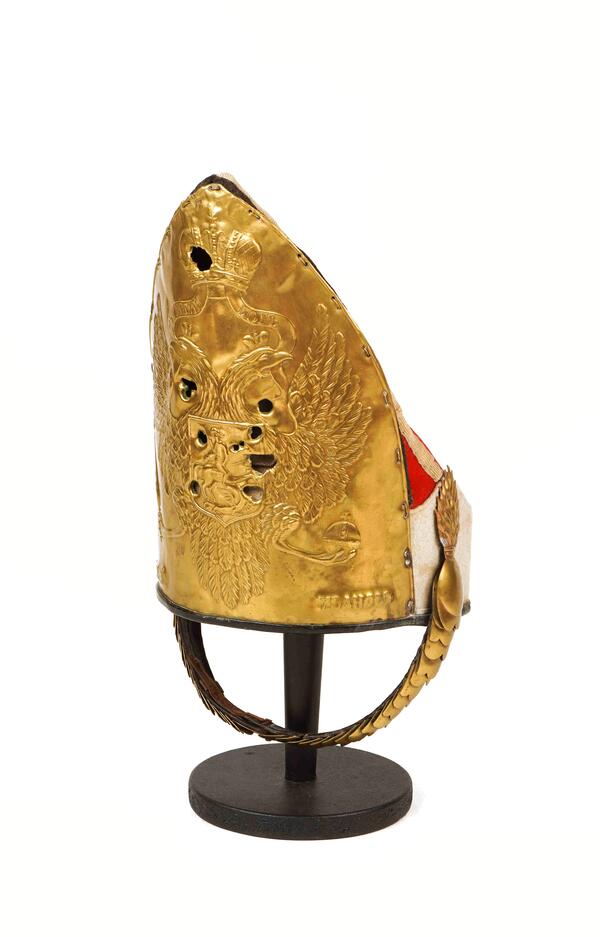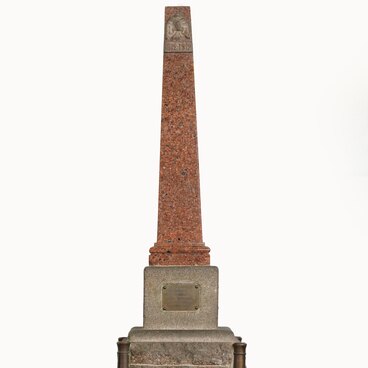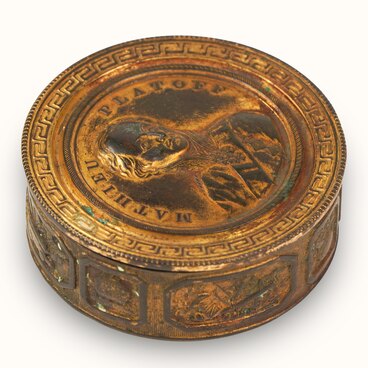The grenadier cap presented in the exhibition belonged to a non-commissioned officer and hero of the Battle of Friedland Alexey Ivanov. The corresponding inscription is emblazoned on its bottom edge in the front.
Grenadier caps were adopted in the army at the end of the 17th century. Due to their conical shape as opposed to the triangular shape of cocked hats, grenadiers could throw hand grenades with greater ease.
On the Pavlovsky caps of the 1802 model, the backside echoed the color of the collar (of the inspection), while the cap-band — the color of the shoulder straps.
The Battle of Friedland took place in East Prussia on June 2 (14), 1807. The Russian Army of 65,000 men and 120 guns was led by General of Cavalry Leonty Leontyevich, count von Bennigsen. The French Army (80,000 men and 118 guns) commanded by Emperor Napoleon was numerically superior. The Russians suffered, in the words of historian Anton Antonovich Kersnovsky, an “honorable defeat”, showing great resilience and also inflicting serious damage to the enemy. In particular, the grenadiers of the Pavlovsky Regiment under the command of Major General Nikolay Nikolaevich Mazovsky fought with great valor. Mazovsky, wounded in the leg and arm, was carried by four grenadiers in front of the troops on crossed sabers; his third wound was fatal, and he left his regiment with parting words, “Friends, do not be shy!”
On January 20, 1808, Emperor Alexander I signed a decree that called for the regiment to preserve even the damaged grenadier caps of those who had fought in the battle of Friedland as reminders of the extraordinary bravery of the soldiers and evidence of the monarch’s special appreciation.
As of 1809, the names and surnames of heroes, that is their owners from the lower ranks who managed to safeguard their grenadier caps on the battlefield, were to be minted on the front of the caps, “both to preserve forever the memory of these honored soldiers, and so that, upon their retirement from the regiment, this honor would not be bestowed upon the new soldiers, to whom those hats will be provided.”
In this way, commemorative grenadier caps were used for many more years in military campaigns. It was only in 1914 that the Pavlovsky grenadiers stopped wearing copper caps and replaced them with caps that offered better protection.
Grenadier caps were adopted in the army at the end of the 17th century. Due to their conical shape as opposed to the triangular shape of cocked hats, grenadiers could throw hand grenades with greater ease.
On the Pavlovsky caps of the 1802 model, the backside echoed the color of the collar (of the inspection), while the cap-band — the color of the shoulder straps.
The Battle of Friedland took place in East Prussia on June 2 (14), 1807. The Russian Army of 65,000 men and 120 guns was led by General of Cavalry Leonty Leontyevich, count von Bennigsen. The French Army (80,000 men and 118 guns) commanded by Emperor Napoleon was numerically superior. The Russians suffered, in the words of historian Anton Antonovich Kersnovsky, an “honorable defeat”, showing great resilience and also inflicting serious damage to the enemy. In particular, the grenadiers of the Pavlovsky Regiment under the command of Major General Nikolay Nikolaevich Mazovsky fought with great valor. Mazovsky, wounded in the leg and arm, was carried by four grenadiers in front of the troops on crossed sabers; his third wound was fatal, and he left his regiment with parting words, “Friends, do not be shy!”
On January 20, 1808, Emperor Alexander I signed a decree that called for the regiment to preserve even the damaged grenadier caps of those who had fought in the battle of Friedland as reminders of the extraordinary bravery of the soldiers and evidence of the monarch’s special appreciation.
As of 1809, the names and surnames of heroes, that is their owners from the lower ranks who managed to safeguard their grenadier caps on the battlefield, were to be minted on the front of the caps, “both to preserve forever the memory of these honored soldiers, and so that, upon their retirement from the regiment, this honor would not be bestowed upon the new soldiers, to whom those hats will be provided.”
In this way, commemorative grenadier caps were used for many more years in military campaigns. It was only in 1914 that the Pavlovsky grenadiers stopped wearing copper caps and replaced them with caps that offered better protection.






